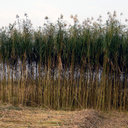Conserved noncoding sequences conserve biological networks and influence genome evolution.
Paraules clau
Resum
Comparative genomics approaches have identified numerous conserved cis-regulatory sequences near genes in plant genomes. Despite the identification of these conserved noncoding sequences (CNSs), our knowledge of their functional importance and selection remains limited. Here, we used a combination of DNA methylome analysis, microarray expression analyses, and functional annotation to study these sequences in the model tree Populus trichocarpa. Methylation in CG contexts and non-CG contexts was lower in CNSs, particularly CNSs in the 5'-upstream regions of genes, compared with other sites in the genome. We observed that CNSs are enriched in genes with transcription and binding functions, and this also associated with syntenic genes and those from whole-genome duplications, suggesting that cis-regulatory sequences play a key role in genome evolution. We detected a significant positive correlation between CNS number and protein interactions, suggesting that CNSs may have roles in the evolution and maintenance of biological networks. The divergence of CNSs indicates that duplication-degeneration-complementation drives the subfunctionalization of a proportion of duplicated genes from whole-genome duplication. Furthermore, population genomics confirmed that most CNSs are under strong purifying selection and only a small subset of CNSs shows evidence of adaptive evolution. These findings provide a foundation for future studies exploring these key genomic features in the maintenance of biological networks, local adaptation, and transcription.


